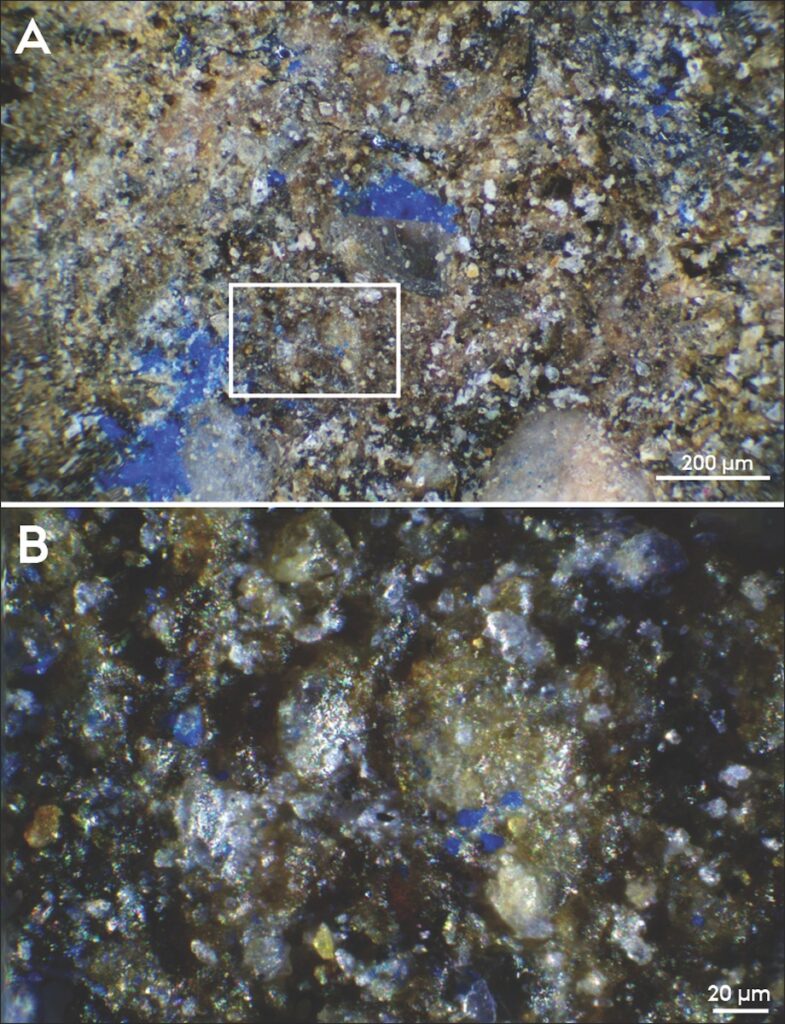Earliest Use of Blue Pigment in Europe Identified
- archaeology.org language
- 2025-10-02 01:00 event
- 15 hours ago schedule


Domain FALEARN.com for sale! This premium domain is available now at Kadomain.com

The German-Soviet War, known in the USSR and today's Russia as the Great Patriotic War or, in Western Europe, as the Eastern Front of the Second World War (1939-45), began in June 1941 with Operation
Chloe Ahmanns Futures After Progress offers a delightful journey into South Baltimores environment and ecology. South Baltimore, due to frequent factory fires, chemical explosions, and aerial pollutan
The Underground Railroad was a decentralized network of White abolitionists, free Blacks, former slaves, Mexicans, Native Americans, and others opposing slavery in the United States who established se
The Battle of Smolensk in August to September 1943 was the second time the Soviet Union and the Third Reich fought over the city on the Dnieper during the Second World War (1939-45). By the summer of
Christopher Marlowe (1564-1593), also known as Kit Marlowe, was one of the most influential dramatists of Elizabethan theatre. Though he is best known for his plays, his poems were very popular in the
The Battle of Kursk (Jul-Aug 1943), which involved nearly 6,000 tanks, was the largest tank battle in history and ended in a decisive victory for the Red Army in WWII (1939-45). Two Axis armies had at
On 5 May 1593, a series of anti-Protestant bills were posted throughout the city of London. One of the bills was written in iambic pentameter and included several references to the works of celebrated
Noah’s Ark and the Slave Trade JamesHoare Thu, 10/02/2025 - 08:00
A new study (pdf) by Lund University researchers of the weapons found on the wreck of the 15th century Danish royal flagship Gribshunden has cast new light on the development of naval artillery in the Age of Discovery, and how the armed ships were used in battle. Part of 11 cannons and their oak gun … Read the full post →"Gribshunden’s artillery explained"
AARHUS, DENMARK—Researchers have discovered the earliest known traces of blue pigment on a 13,000-year-old stone […] The post Earliest Use of Blue Pigment in Europe Identified appeared first on Archaeology Magazine. News, azurite, blue, Germany, Paleolithic, pigment
EILEAN DONAN, SCOTLAND—The iconic Eilean Donan Castle is one of the most picturesque spots in […] The post Medieval Hair Styling Tool Recovered at Scottish Castle appeared first on Archaeology Magazine. News, castle, Eilean Donan, gravoir, hair styling, medieval, Scotland
NEFUD DESERT, SAUDI ARABIA—Researchers were recently surprised when they encountered more than 60 ancient rock […] The post Animal Rock Art Likely Marked Arabian Desert Water Sources appeared first on Archaeology Magazine. News, animals, camels, desert, Nefud Desert, rock art, Saudi Arabia, water
The poster for John Wayne's The Alamo (1960) celebrates its history with the line, "The Mission That Became a FortressThe Fortress That Became A Shrine," which is a concise and accurate summary of the story of the structure famously known as the Alamo in downtown San Antonio, Texas, USA. The Mission Texas was claimed by Spain in the 16th century and began establishing mission complexes between...
The pre-First World War arms race between Britain and Germany was fuelled by Britain's desire to protect its empire, Germany's desire to build an empire, and a general atmosphere of suspicion amongst the great powers, which led to the formation of two opposing alliance blocs. Dreadnought battleships became a particular point of competition between the Royal Navy and the Imperial German Navy, a race...
Dozens of monumental rock carvings of animals have been discovered around in Saudi Arabia’s Nefud desert. They date to 12,000 years ago, 2,000 years older than the previous earliest evidence of human occupation in the area. The discovery has been published in the journal Nature Communications. Before this discovery, the first human presence in the … Read the full post →"12,000-year-old animal rock carvings found in Saudi Arabian desert"
‘The Indefatigable Asa Briggs’ by Adam Sisman review JamesHoare Wed, 10/01/2025 - 08:00
Elam was a region in the Near East corresponding to the modern-day provinces of Ilam and Khuzestan in southern Iran (though it also included part of modern-day southern Iraq) whose civilization spanned thousands of years from circa 3200 to circa 539 BCE. The name comes from the Akkadian and Sumerian for highlands or high country, while the Elamites referred to their land as Haltami (or Haltamti...
CHARLESTOWN, MASSACHUSETTS—Every American schoolchild learns of the brave stand Revolutionary War Patriots made during the […] The post Excavations Reveal Boston Neighborhood Burned in Battle of Bunker Hill appeared first on Archaeology Magazine. News, Boston, Bunker Hill, Charlestown, fire, Massachusetts, Revolutionary War, tavern
CRANFIELD, ENGLAND—The development of iron metallurgy was one of the most pivotal moments in human […] The post Copper Workers' Experiments Might Have Helped Usher In Iron Age appeared first on Archaeology Magazine. News, copper smelting, Cranfield, Georgia, Iron Age, iron oxide, Kvemo Bolnisi, metallurgy